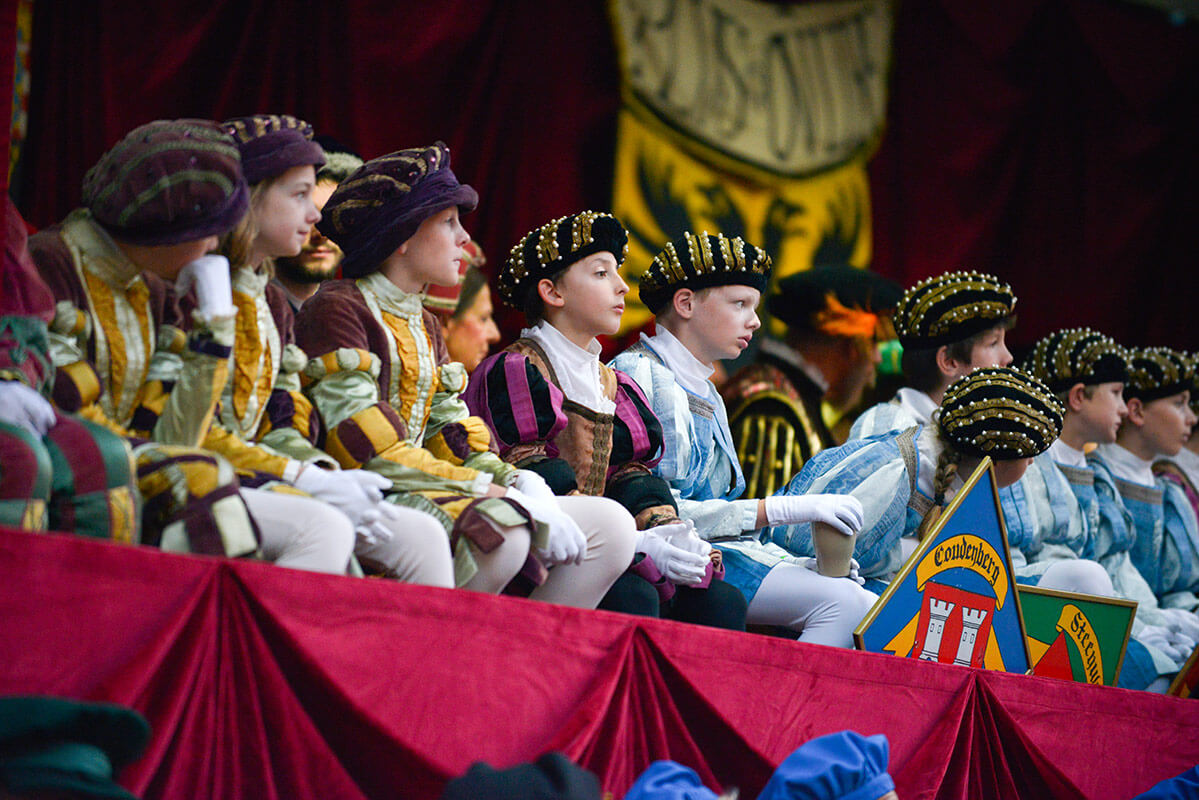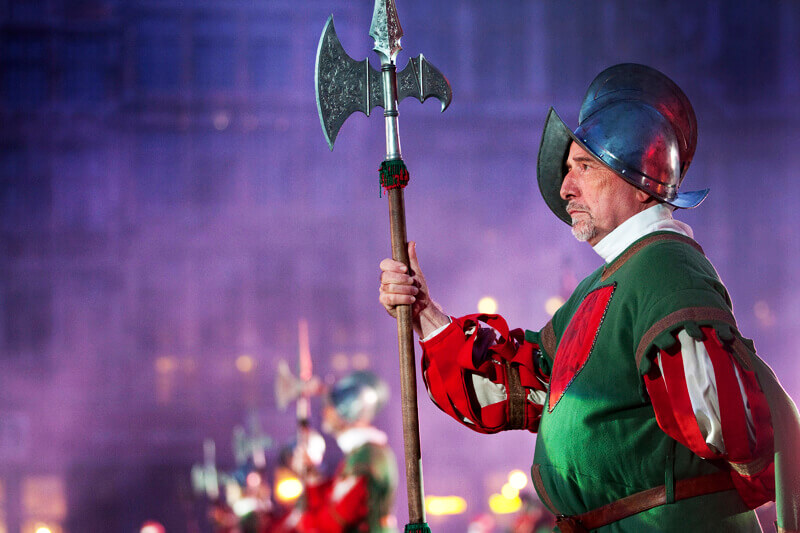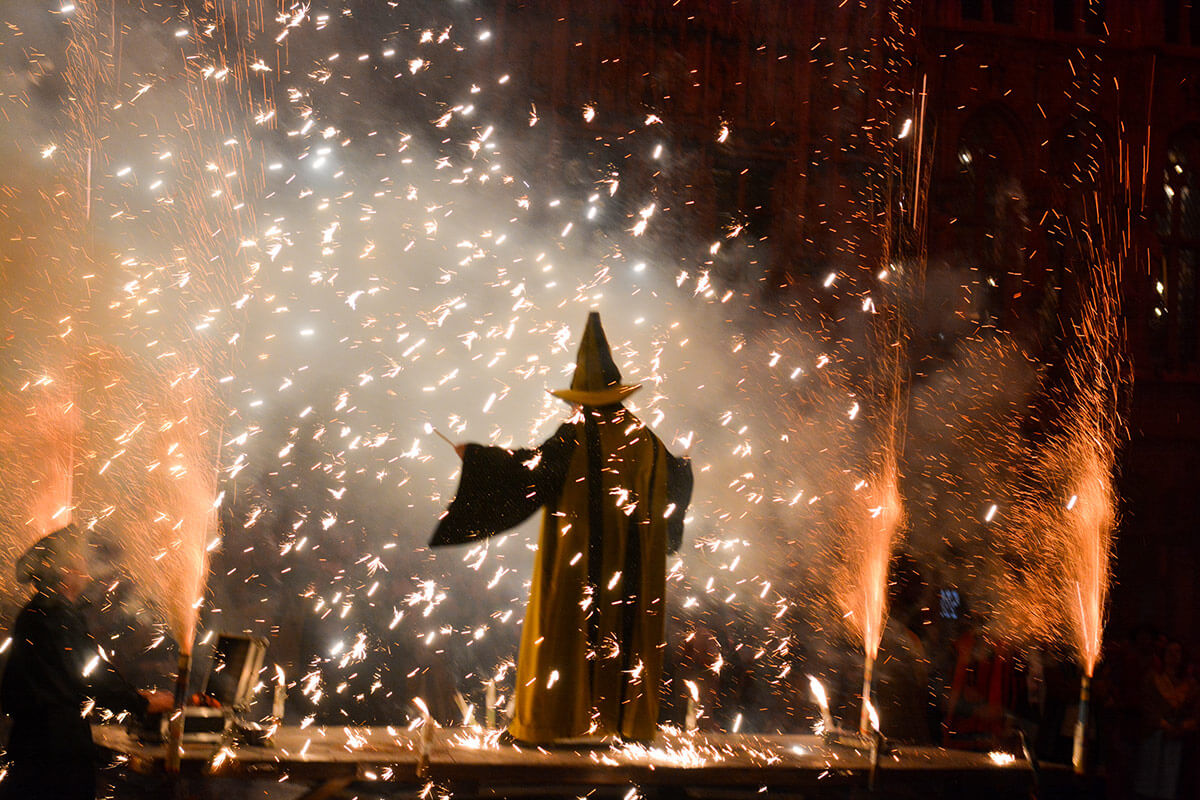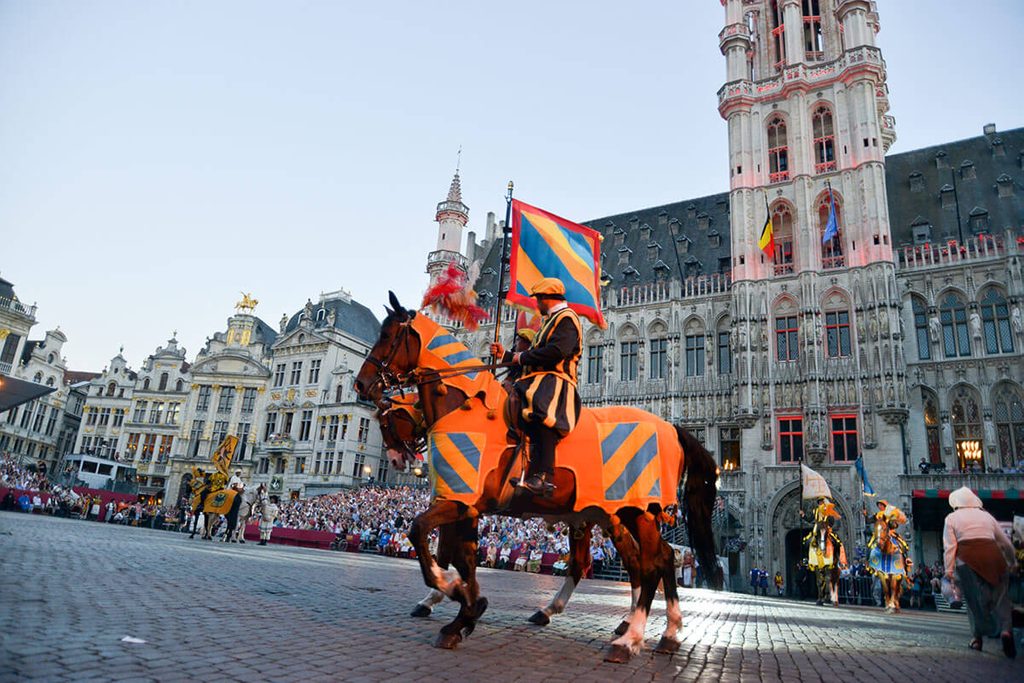The Ommegang of Brussels, recognised by UNESCO as Intangible Cultural Heritage, returns to Brussels on Wednesday, with all its magic and pageantry.
Over a thousand colourfully dressed period performers, sporting large flags, stilts, and riding on horseback will parade throughout the centre of the city before ending up at Brussels’ iconic Grand Place.
The origins of the festival are a topic of debate. Legend has it that the festival started as early as the 14th century when a lady named Beatrix Soetkens stole the Onze-Lieve-Vrouw op ‘t Stockxken statue from the Cathedral of Our Lady in Antwerp.
On the instruction of a vision of the Virgin Mary, Soetkens somehow managed to bring the carving to Brussels, where she entrusted it with Crossbowmen’s Guild in Brussels’ Sablon area. The Guild later promised an annual procession, called an Ommegang.

Credit: Ommegang
In subsequent centuries, the festival lost its religious significance and became intertwined with the visits of European royalty to Brussels. The event was an opportunity for the Bourgeois of Brussels to put their riches on opulent display.
In the mid-16th century, the event became associated with the "Joyous Entry" (a type of festival to welcome visiting nobility) of Holy Roman Emperor Charles V and his son Philip II. Much of the symbolism of this royal visit is maintained even today, especially the royal colours and flags from great European houses.

Credit: Ommegang
The event was revived in the 1930s on the centenary of Belgium’s independence, from where it has gained much of its modern character. Musical acts, dancers, archers, fencers, and arquebusiers relive the spectacular greeting first offered to the emperor nearly 500 years ago.

Credit: Ommegang
Brussels residents and visitors line the streets of the city to watch the procession, which can be viewed for free, although viewing from the Grand Place is ticketed, available on the organiser’s official website.
This year’s festival will also see a series of extra festivities in the vicinity of the Ommegang celebrations. In Sablon on Wednesday, the organisers will host a Renaissance Village, offering entertainment such as a knight’s tournament, mediaeval craftsmen, and a performance of a 15th-century troupe of mercenaries.

